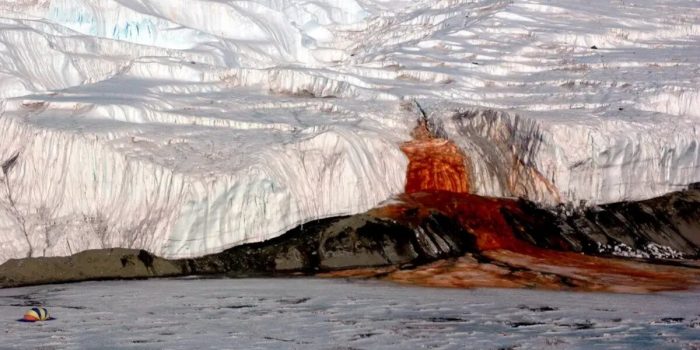Scientists have been puzzled for years by the bright red river that flows from Antarctica’s Taylor Glacier, known as Blood Falls. Back in 1911, geologist Griffith Taylor first stumbled upon this phenomenon and initially attributed the red color to red algae present in the water.
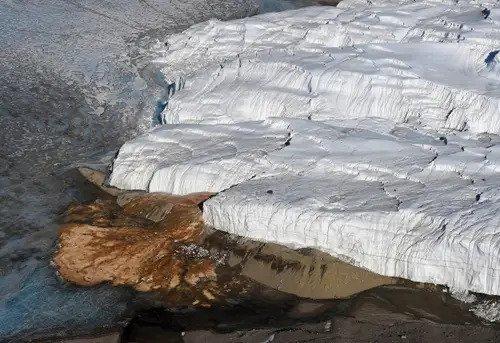
After more than a century of investigation, scientists finally discovered the cause behind the blood-like appearance of the water. They found that iron salts from within the glacier seep out and react with the air, turning the water red.
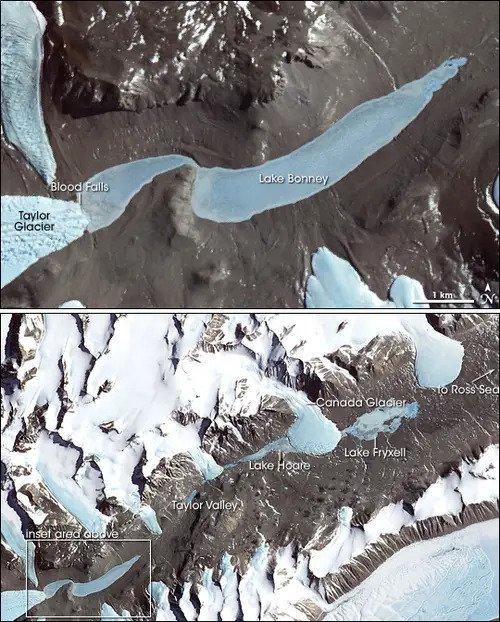
In a study conducted in 2017, scientists determined that Taylor Glacier was formed around 2 million years ago, trapping a saltwater lake beneath it. Over millions of years, this ancient lake slowly reached the glacier’s edge, causing saltwater to be squeezed out.
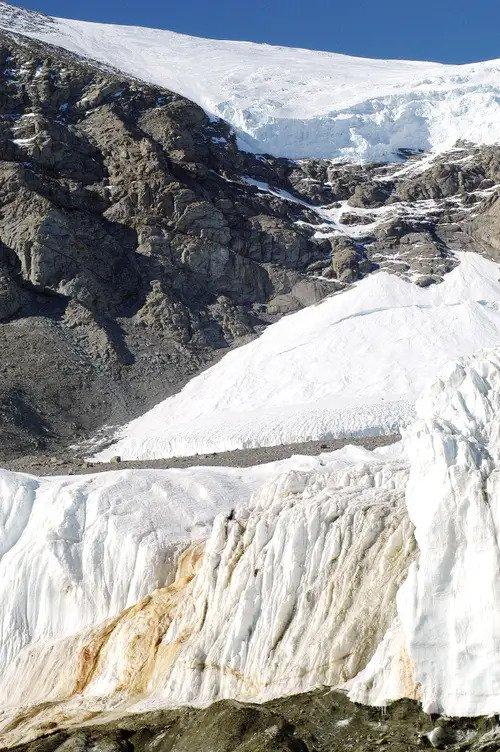
In 2015, researchers used ice-penetrating radar and discovered a network of rivers flowing through cracks in the glacier. This finding revealed that liquid water can exist within an extremely cold glacier.

“While it sounds counterintuitive, water releases heat as it freezes, and that heat warms the surrounding colder ice,” Erin Pettit, a glaciologist at the University of Alaska Fairbanks and co-author of the 2017 study, said in a press release. “The heat and the lower freezing temperature of salty water make liquid movement possible. Taylor Glacier is now the coldest known glacier to have persistently flowing water.”


Additionally, a study conducted in 2009 unveiled that the underwater lake harbors a unique community of microbes. These microorganisms are capable of surviving in extreme conditions, devoid of light and oxygen. They rely on iron and sulfate to sustain themselves.
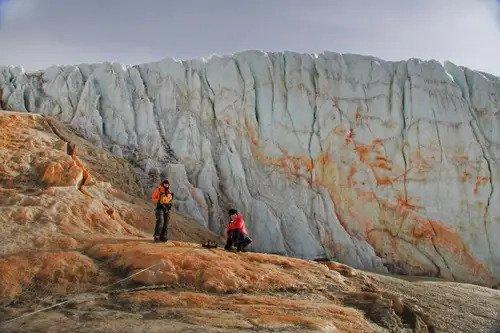
“Among the big questions here are ‘how does an ecosystem function below glaciers?’, ‘How are they able to persist below hundreds of meters of ice and live in permanently cold and dark conditions for extended periods of time, in the case of Blood Falls, over millions of years?” Jill Mikucki, a microbiologist, and the study’s lead author, said in a press release.
Scientists believe that the trapped lake beneath the glacier was teeming with microbes millions of years ago. Studying these microorganisms is crucial for astrobiology as it can provide insights into how life may endure in frozen water bodies on other planets, such as our neighboring planet Mars.

